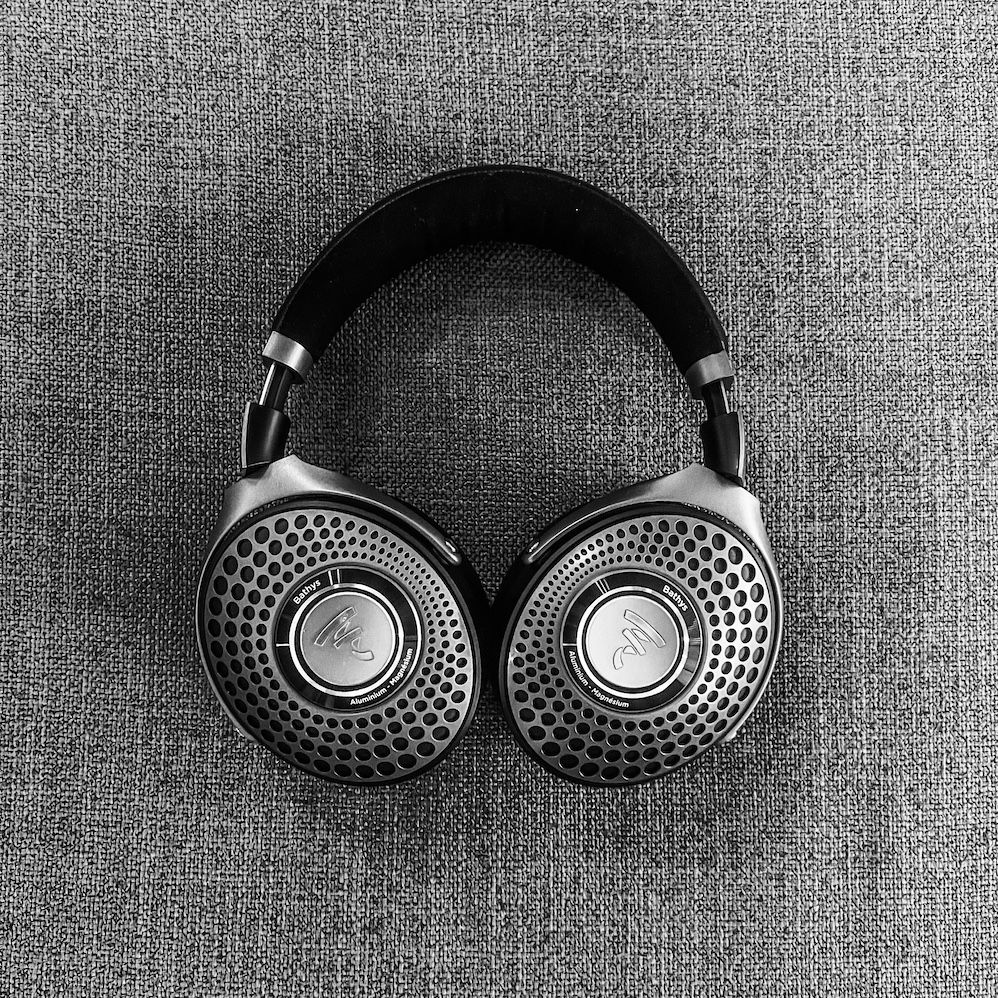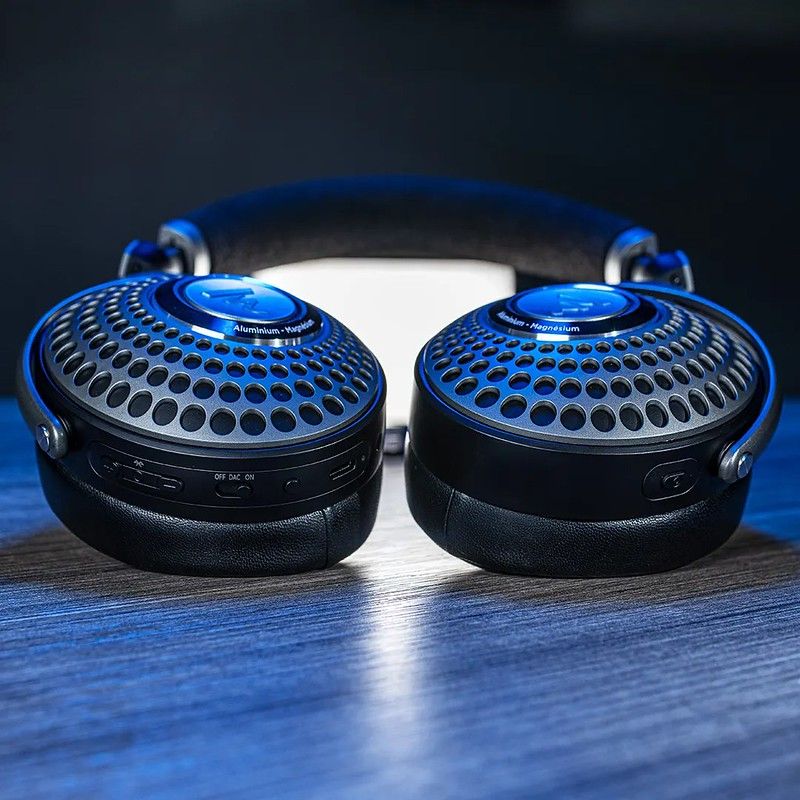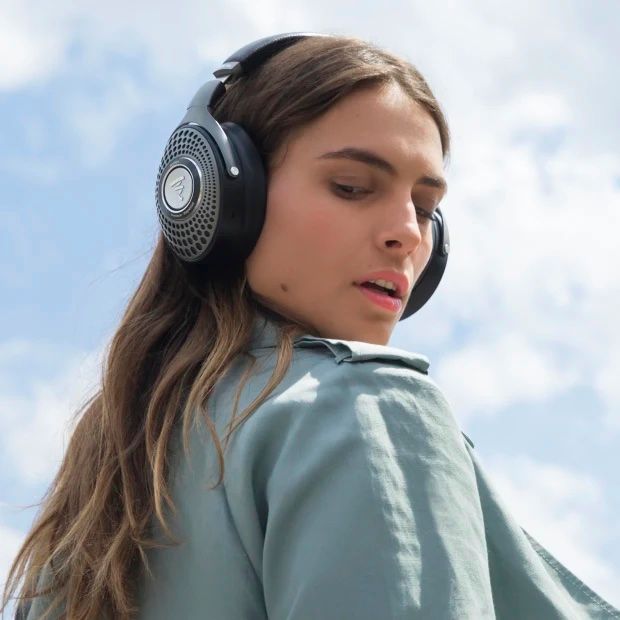Review: Focal Bathy’s Headphones

Introduction
The last few years have seen a massive change in the way we consume music. With the advent of the iPod more than 20 years ago it was finally possible to carry lots and lots of music with you.
The iTune store made it easy and almost normal for a lot of people to buy their latest tunes on the internet instead of a physical store.
Then came the iPhone and with it a few years later the arrival of mobile internet and the advent of music streaming. Now you had “infinite pockets” to carry and listen to all your music.
What did not change for a long time though was how you listened to it. Whether you plugged your headphones into an iPod, portable CD Player or computer, it was almost always involving a cable.
This started changing a few years ago when the “True Wireless” trend kicked off. Wireless headphones aren’t new, much like cordless phones radio signals have been used for a long time to transmit music without the need of wires to your ears. But in general the technology was clunky, you needed special receivers to make use of them, often requiring external power sources.
For phone calls, bluetooth headsets had become a standard by the mid-2000s, but the battery time as well as the sound quality just wasn’t good enough to allow for music to be sent that way in a satisfying way.
This started changing in earnest in the mid 2010s when advances with the Bluetooth stack as well as advances in battery runtime finally allowed to make use of the built in bluetooth capability that most phones have.
Since then, you can find bluetooth headphones for as little as $20 to where the sky’s the limit.
The Focal Bathy’s come a bit closer to the sky than most, so are they worth it? They do retail for $1000 after all.

Design and Ergonomics
The design of the Bathy’s is somewhat classical, one could even say subdued if it wouldn’t be for the bright LED lights on the side that are on by default. I guess it’s “it” at the moment that everything needs to have LED lights to show that it is “modern” and “current”. Thankfully you can turn the LED lights off, but only through the phone app, which is a bit annoying if you tend not to just install an app for a new device you just bought. More about the app and its features later.
The other thing that literally stands out is just how big the cushions are. I do not have a small head and I think the “standoff” is quite pronounced. This may be in part why the Bathy’s sound so wide though. More about this in the sound section.
Lastly, a very weird design decisions. The controls for the Bathy’s that exist on the headphones themselves are meant to be on the right side. But weirdly, if you put the headphones down and fold the ear cups in and set them down, the controls are on the left side.
I actually ended up listening to the headphones for a while then wrong way round and wondered why the bass sounded a bit muffled. This was the answer, I had them on backwards.
It is a mystery to me why the Bathy’s fold that way. I gave the headphones to a few people and ask them to put them on, and without fail everybody put them on the wrong way first, because instinctivly people presume that when you fold them, you put them down on the cushions, not on the the back of the headphones.
I can guess that Focal designed the Bathy’s this way to not have pressure on the ear cups and prevent their compression, but I really do not think this is a good or user-friendly design.

Quirks & Features
Hook me up
The Bathy’s come with a multitude of connectivity options.
- Wireless over Bluetooth, supporting quite a variety of protocols:
1. SBC2. aptX3. aptX HD4. AAC - Wired, via a standard 3.5mm connector. Note that the headphones will still required to be powered on in order to function.
- Via USB-C, using it’s own DAC for sound decoding.
This gives you quite a bit of options on how you want to connect to your devices.
In addition, the Bathy’s also offer Active Noise Cancellation (ANC). The mode can either be transparent, letting outside noise through, soft, cutting out loud noises, or silent, which is meant to eliminated all of the external sound.
Take me on the road
Focal claims a battery life for using bluetooth at 30 hours. My testing has confirmed this claim.
When wired into your stereo / computer via a normal audio cable the claim is 35 hours and if you use the built in DAC via USB cable 40 hours.
Be aware though that you cannot use and charge the headphones at the same time. The headphones also aren’t passive, so if you ever run out of power, just plugging in the 3.5mm cable will not work.
Considering the long battery runtime that is not really that much of a concern, but it is a bit surprising that headphones in this price range have such a limitation.

Active Noise Cancellation (ANC)
What is ANC?
Active noise cancellation works by listening to the outside noise and creating “counter waves”. Think of throwing a rock into a quiet pond. You can see the waves from the rock rippling out across the lake. If you throw another rock into the lake, it will create its own waves. Where those two waves intersect, they can cancel each other out if they are of the same amplitude (or reduce one of the waves).
ANC works in the same way. It tries to create counter waves to eliminate external noise. This of course is a bit of a challenge, as you do not want to cancel out the music you are listening to, so almost always this isn’t 100% perfect, but often works better than purely passive noise cancelling (e.g. by having the headphones block your ear canal, or fully enclose the ear and using heavy dampening in the headphone.
How good is the ANC?
I have tried a few noise cancelling headsets. Both passive and active. By themselves, the headphones (when turned off) provide an okay noise cancelling experience, they aren’t quite as quiet as my beyerdynamic DT770 Pros, but better than some cheap, closed ones I bought years ago.
With ANC turned on, they are up there in their sound and noise cancelling quality with the Sony’s WH-1000XM5, which sell for around $500 and are considered somewhat reference for their abilities.
In the real world I have tried the Bathy’s at home, on the Skytrain here in Vancouver, in an office as well as in a coffee shop.
The experience has been a bit mixed. In the office environment it does an excellent job of killing off the background noises and allows for good concentration and listening to the music.
On the train and in the coffee shop it was a more mixed bag. Certain sounds, like knocking out the coffee from the porta filter, made it through, especially during quieter music passages. On the train, similar, certain screeching sounds made it through the ANC even when the music was louder. I found they seem to do slightly worse than the AirPod Pros in these scenarios. Probably due to the fact that the AirPods sit directly in your ear canal and do a much better job in passively cancelling noises.
I also tried wearing them while walking down the street, they are doing an okay job with ambient noises, but if there’s a lot of wind the size of them def. catches it and transfers some of the sound inside the headphones.
It’s also worth noting that they are not IPX rated, so in rainy Vancouver it’s not really recommended to wear them outside.
The not so great thing about the Bathy ANC
With all that said, there are a bunch of annoyances with the ANC.
First thing is the slowness in which ANC changes modes. It takes around a second to go from “Silent” to “Soft” or “Off”. In addition to that, while the Bathy’s switch, they turn off the audio you’re listening to. So you get this fade out / fade in effect which is a bit irritating. Especially compared to my AirPods Pros that manage to do the switch instantly, without interrupting what you are listening to.
I also struggle a bit to just find the button the headphones themselves, and have hit pretty much everything else on occasion. That may be more down to me though than the headphones itself.

Sound Quality
Let me start by saying that these are the widest sounding wireless headphones I have ever listened to. They do beat my Meze Classic 99’s and sound soundstage wise almost like my open Sennheisers.
This was probably the biggest surprise when I first listened to them. Closed headphones generally do have a narrower soundstage and I found most wireless headphones are even narrower.
Considering the many different ways you can get music into it, I did a cross listing between a couple of songs trying different methods:
- aptX HD & Wired into my Fiio M11 Pro Ltd.
- AAC through my Bluetooth
- USB-C to my MacBook Pro.
The files were always the same, the only difference was in the connection to the headphones. In all these cases I used the Plex Media Player to play back the files (note, the decoder may still be different as Plex uses different decoders based on platform).
So what’s the difference?
Let’s get the wireless connectivity (aptX & AAC) out of the way first. I could not hear a difference. If I’d be forced to I’d say the aptX HD stuff sounded a bit more detailed, but I couldn’t point at anything specific. The compression on both does not seem to make a massive difference in my testing. This isn’t really too surprising, it’s a few kbit/s more with aptX, but the AAC codec has been developed to deal with low(er) bandwidth, so a massive jump would have actually surprised me.
For the 3.5mm wired connection it did sound better. As a caveat: the decoding is done by two discreet DACs in my Fiio M11 Pro Ltd. The DACs are known for their warmer, organic, sound profile. A lot of the change may be down to the DACs more so than the wired connection, but I would still say that wired beats wireless, if for no other reason than that you are not bandwidth constrained, plus you get a bit more playback time.
So how about the build in DAC? In short: It’s good. It is not at the level as my M11 Pro, but it def. Does beat the sound quality coming out of my MacBook. This, again, shouldn’t surprise. Apple’s DACs were always okay, but never anything special. A $1000 pair of headphones with a built in DAC should sound better than what comes out of the box from Apple.
Having said that, for both the USB as well as the 3.5mm cable, the connection is on the right side where all the controls are. Yet the headphone jack on my laptop etc. are all on the left side. So I always have the cable crossing over in front of me. I know, #FirstWorldProblem
Sound: Final thoughts
As stated above, the Bathy’s are wide, they have an incredibly large sound stage with a lot of detail. The bass is a bit more subdued than you are probably used to if you have listened to Beats or Sony headphones. It won’t have your skull vibrate, but it is full and does fill the sound stage, it just does not have the massive punch you get with the Beats as a comparison.
So if you are someone who wants a heavy beat, these are probably not for you. They do provide a very balanced soundstage though, with lots of mids and heights. Hearing a guitar string being plugged, or the strike of a key on a piano is fascinating to listen to and as enjoyable as when I listen to the same on my Sennheiser’s HD 660s.

Final Thoughts
I have been using the Bathy’s now for two months and despite my minor annoyances they are easily the nicest wireless headphones I have ever owned. They are comfortable on the head even for longer sessions with no pressure points and sound wise they come close to my cabled headphones.
This of course all comes at a price. Which here in Canada is pretty much $1000. This is a lot of money to spend on a pair of headphones. Are they worth it? That’s a question you ultimately have to answer for yourself.
I have spent quite a bit of money over the last few years investing into better audio equipment. From upgraded DACs to buying a new record player. So for me the Bathy’s were a logical next step.
If you have the money and you want incredibly nice and balanced sounding headphones, they are def. A good investment.

Summary & Rating
Good looking and good sounding wireless headphones with a myriad of connection options, at a price.
Pros
- Long Battery life
- Stylish
- Comfortable to wear for extended periods
- Incredibly wide sound stage
- Well balanced audio.
Cons
- Weird ergonomics
- Bass is a little bit timid, especially when compared to Sony, Bose, Beats.
- No IPX Rating (Not water proof / protection)
- Expensive
Score
- Usability: 8/10
- Battery: 9/10
- Sound Quality: 8/10
- Design: 7/10
- ANC: 7/10
Total: 39/50
